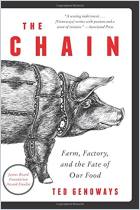Melden Sie sich bei getAbstract an, um die Zusammenfassung zu erhalten.

Melden Sie sich bei getAbstract an, um die Zusammenfassung zu erhalten.
Saru Jayaraman
Behind the Kitchen Door
Cornell UP, 2013
Was ist drin?
How restaurants treat the people who pack, cook and serve your food affects everything you eat.
Recommendation
Americans are rethinking how they eat. They want organic, fresh, local food sourced from humanely treated animals. But sadly, they mostly ignore the people who package, cut, clean, prepare and cook their food. Saru Jayaraman – founder of the Restaurant Opportunities Center (ROC), an advocacy group for restaurant workers – reports that many food industry employees face dangerous, abusive working conditions. She profiles employees who have dealt with stolen wages, underpayment, working when sick or injured, discrimination or sexual harassment. Each chapter offers another sad example. One ray of hope is the ROC, which works “to improve wages and working conditions for the nation’s 10 million restaurant workers.” While cautioning readers that other points of view often counter presentations from passionate advocates like Jayaraman, getAbstract recommends her vivid report to diners and restaurant managers who want to make a difference. If she’s right, even in part, something is rotten in the kitchen.
Summary
About the Author
Saru Jayaraman co-founded and co-runs Restaurant Opportunities Centers United, which publishes the ROC National Diners’ Guide for consumers.





















Comment on this summary